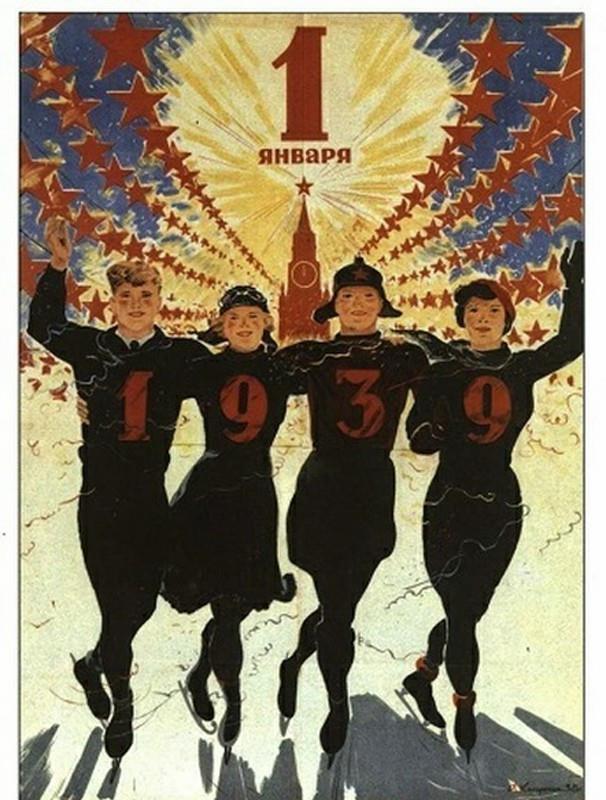In the past, every New Year's Day, New Year's greeting cards had to be mailed. In the Internet era, everything has changed, paper greeting cards are basically missing, and a group of old greeting cards from decades ago have been deliberately found, but they are Soviet, and it is also very interesting to see.

When 1939 was approaching, few except Hitler would have thought that a world war was coming. In September of that year, Hitler launched a blitzkrieg against Poland, and then Germany and the Soviet Union divided Poland. The two countries also signed the Soviet-German Non-Aggression Pact, dividing their spheres of influence.
In 1940, Hitler launched a major attack on France, and the French government could not stop it and could only surrender. Western Europe was a mess, and the Soviet union was quiet.
The year 1941 is coming, and Muscovites are celebrating the New Year. What the Soviets did not expect was that on June 22 of that year, the Soviet-German Non-Aggression Pact immediately became a page of waste paper, and the German army surged like a tide, defeating the Soviet Red Army and fleeing.
On the New Year of 1942, the Germans were already under Moscow, and Muscovites were celebrating the New Year amid the sound of gunfire. Soon, the Soviets launched a counter-offensive and won the battle for Moscow.
In 1943, the Soviet army launched a full-scale counteroffensive, and the Battle of Stalingrad won a crucial victory, which became a major turning point in The Second World War.
In 1944, Santa Claus picked up his gun and watched the Germans scurrying around. That gun was none other than the Soviet Army's Bobosa submachine gun, a mass killer. Such a Santa Claus, the first time to see, right? But the Russians believe in the Orthodox Church, this is not really Santa Claus, this is the Soviet New Year's old man, known as the cold old man.
As 1945 approached, victory was in sight. On April 30, 1945, when the Soviets captured Berlin, Hitler committed suicide with his mistress and was ordered to go to Huangquan. On August 6, U.S. forces atomic bombed Hiroshima, Japan. On August 8, the Soviet Union declared war on Japan and sent troops to northeast China. On August 9, another american atomic bomb was dropped on Nagasaki, Japan. The Emperor of Japan finally could not survive and had to surrender unconditionally.
At the end of World War II, the years of peace came, and the style of the 1946 New Year greeting card changed.
In 1947, the Kremlin was shrouded in a festive atmosphere.
In 1948, the New Year's Old Man drove a car.
1949 was the year of the founding of New China. In the blink of an eye, seventy years have passed, and these days have passed so quickly.